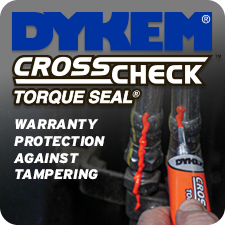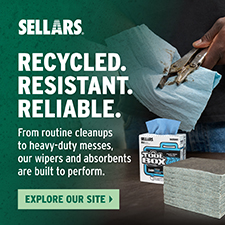Easy tips for extending industrial belt life and maintenance intervals
By Kristian Campbell
Industrial belt drives are used all around the world to power some of the biggest machinery. Known for being a cost effective and reliable way to provide shaft-to-shaft power transmission speed changes, they are great in a number of different applications – HVAC systems, machine equipment, textile mills, agricultural machinery and more.
These belts are designed to perform at high levels for a long time, however, industrial belts are not always properly maintained and therefore, experience a number of issues. Since belts can be time consuming to replace, and equipment downtime is costly and unacceptable here are two key tips to help ensure proper belt performance, from the right way to store belts to following an effective protocol for inspection and maintenance. Below are some easy tips to extending belt life.
Proper Belt Storage
Many maintenance managers do not have a procedure for storing and handling power transmission belts but there is definitely a right and wrong way to store certain belts. Here’s three tips worth noting:
1) Belts should be stored in a cool dry environment under 85oF (29oC) and below 70% relative humidity, with no direct contact with sunlight, UV light and Ozone. Ultraviolet light from sunlight and fluorescent lighting can cause UV degradation, which has a serious detrimental effect on rubber, accelerating deterioration.
2) A ‘first in first out’ approach is critical given belts typically have a shelf life of 7 years. If you use a ‘last in first out’ process, there will always be a group of belts that don’t move. In most industrial parts warehouses, it is not uncommon for about 25% of belts to be past their shelf life, which means they are unusable and unreturnable. Check the code on the belt to determine the manufacturing date so you know whether they are still usable. Most manufacturers use a date code system similar to the below but check with the manufacturer of your belts to ensure that you understand their date code system.
- WW: Week numbers from 1 - 52 in a calendar year
- YY: The last 2 digits of year
- ZZZ: Sequence numbers to indicate the position of the belt on the mold
- Example: 2221001 --> means the belt was manufactured in week 22 of year 2021
3) Pay attention to the different ways various belt types need to be stored. It is not a one size fits all approach. For instance, single V-belts should be hung on the wall, using large diameter pegs made from a PVC pipe, as its diameter is large enough to avoid “memory” in a single point of the belt. Large V-belts should be “coiled” to avoid excessive weight in a single point. The way to produce coils is to grab both extremes with the belt, one with the right hand, and the other with the left hand. At the same time, rotate the belt, one hand clockwise, and the other, counterclockwise. Do not over-coil. Joined V-belt constructions, due to weight, should be left inside a box lying flat on a shelf.
Industrial Belt Drive Inspection and Preventative Maintenance
One way to address V-belt issues like alignment or poor maintenance is by implementing a proper V-belt preventative maintenance program that includes regular inspections. It can help your company save thousands of dollars in labor costs and downtime, parts usage and administrative costs.
1) Check temps – Check the ambient temperature of the belt itself with a temperature gun (preferably while still operating). V-belts should not be run above 140°F (60°C) and synchronous belts should not run higher than 185°F (85°C). For every 18°F (10°C) increase in belt temperature – which is a 36°F (20°C) ambient temperature change – belt life is cut in half.
2) Shut down the system – Given the nature and size of most industrial machines, a complete shutdown is usually necessary as are a number of other precautions like tagging the machine and locking machine power in the off position.
3) Inspect the belt – Remove the safety guard and mark a line on the belt. Work your way around it, looking for cracks, frayed spots, cuts, missing teeth and unusual wear.
4) Belt replacement – If a belt needs replacing, never pry it on or off a drive. Always loosen the take-up bolts and move the sheaves to create slack. Only use new belts from the same manufacturer on one drive. Never mix and match belts from different manufacturers.
5) Check drive alignment – Using a straight edge, string or laser alignment tool, check positioning. There should be 4 points of contact across the drive if it is properly aligned. The larger the misalignment, the greater chance for belt instability, wear and V-belt turnover. V-belt drives should be aligned to within .5° or 1/10" per foot of center distance span. Synchronous drives and poly-V drives should be aligned to within .25° or 1/16" per foot of center distance span.
6) Check bushings/sheaves – Incorrect bushing installation or worn bushings can result in sheave misalignment.
7) Measure tension – Using the Force/Deflection method and a tension tester, check the tension of the belt. V-belt drives should be tensioned as per the manufacturer’s recommended tension chart at the force rate specified. The deflection distance is to be 1/64 per inch of span length. So if the span length is 32", then the deflection distance should be 1/2" (32/64") to reach the specified force.
8) Double check alignment and tension re-iteratively – If you change one then you must check the other until neither needs to be adjusted again. Under-tensioned V-belts will cause slip and excessive heat while under-tensioned synchronous belts will jump teeth and possibly snap in half. Over-tensioned V-belts and synchronous belts both cause reduced belt and bearing life due to excessive loads and tension.
 Kristian Campbell is industrial sales manager for Dayco Products LLC. He has worked in the industrial marketplace for nearly 30 years and is also involved with the PTDA (Power Transmission Distributors Association) and his local Irricana & District Agricultural Society. Dayco provides comprehensive technical support, including free training, engineering assistance and quality products for the industrial marketplace. For more information, contact Dayco’s U.S. industrial customer service team at 833-721-2355.
Kristian Campbell is industrial sales manager for Dayco Products LLC. He has worked in the industrial marketplace for nearly 30 years and is also involved with the PTDA (Power Transmission Distributors Association) and his local Irricana & District Agricultural Society. Dayco provides comprehensive technical support, including free training, engineering assistance and quality products for the industrial marketplace. For more information, contact Dayco’s U.S. industrial customer service team at 833-721-2355.















